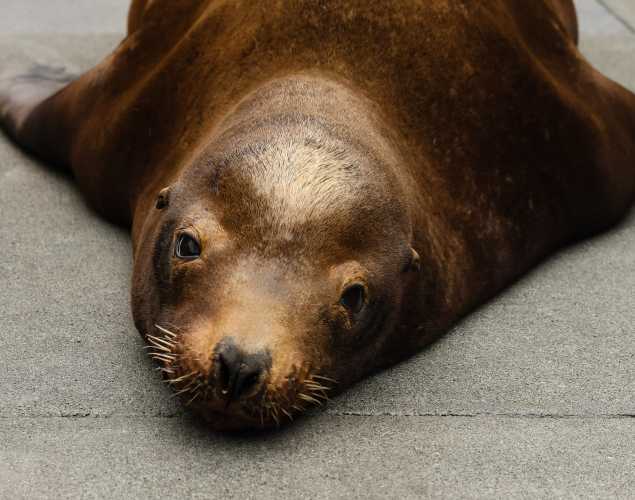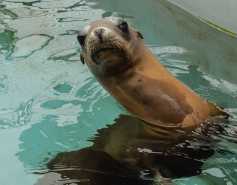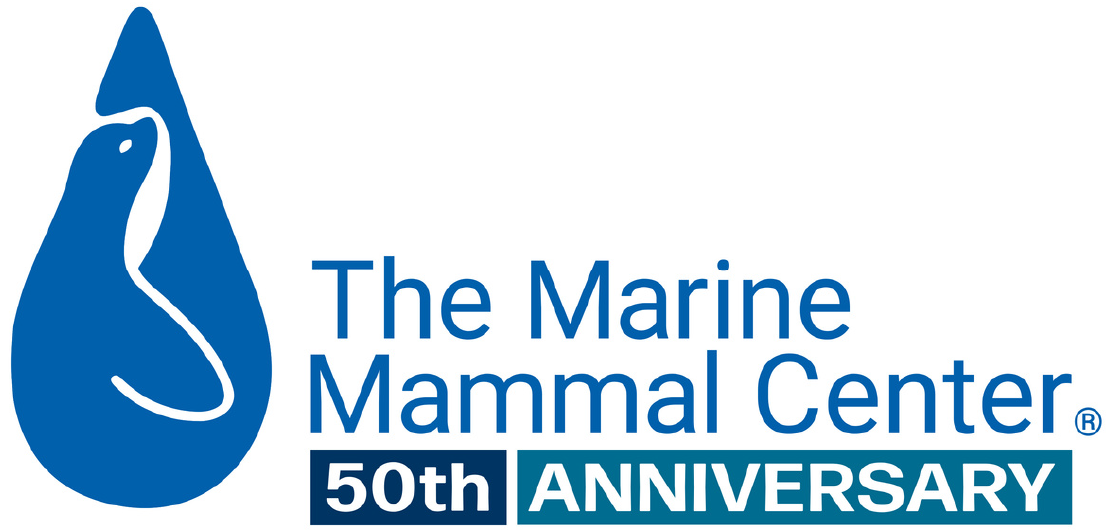
Natural Exposure to Domoic Acid Causes Behavioral Perseveration in Wild Sea Lions:
- Domoic acid
- Diagnostics
Abstract
Domoic acid is a naturally occurring algal toxin that causes neurological symptoms and mortality in exposed marine life. California sea lions (Zalophus californianus) are the most visible victims, and suffer epilepsy and progressive hippocampal atrophy. Despite its reliable neurological effects, little is known about how exposure to domoic acid alters behavior, which is critical for understanding the impact of toxic exposure on long-term survival in sea lions and other exposed animals, including humans. Better understanding of the behavioral effects may also inform veterinary diagnosis and treatment. Anecdotally, exposed sea lions have been reported to show enhanced perseverative behavior. To assess the neurobehavioral effects of domoic acid, we compared veterinary diagnoses, measures of hippocampal volume from in vivo MRI, and behavioral measures of habituation and dishabituation in 27 wild sea lions undergoing rehabilitation. The sample was divided post-hoc between subjects with clear veterinary diagnoses of chronic domoic acid toxicosis and those with no evidence of the disease. In the behavioral task, subjects were exposed repeatedly to sounds from two source locations, and, following a short delay, exposed again. Veterinary diagnosis of domoic acid toxicosis was associated with extent of hippocampal damage, predicted delayed habituation in phase 1, and enhanced dishabituation in phase 2. Receiver operating characteristic analysis indicated that delayed habituation in phase 1 was diagnostically predictive. Enhanced dishabituation in phase 2 was correlated with reduced right ventral hippocampal volume. Together, delayed habituation and enhanced dishabituation following domoic acid exposure indicate a clinically relevant and potentially maladaptive behavioral pattern of perseveration.
Cook, P. F., Reichmuth, C., Rouse, A., Dennison, S., Van Bonn, B., Gulland, F. 2016. Natural exposure to domoic acid causes behavioral perseveration in Wild Sea lions: Neural underpinnings and diagnostic application. Neurotoxicology and Teratology. 57(2016): 95-105.
Related Publications
{"image":"\/Animals\/Patients\/California sea lions\/2020\/csl-oso-by-bill-hunnewell-c-the-marine-mammal-center-1.jpg","alt":"California sea lion","title":"Loss of Neuron Connectors in the Brains of Sea Lions with Epilepsy","link_url":"https:\/\/www.marinemammalcenter.org\/publications\/loss-of-neuron-connectors-in-the-brains-of-sea-lions-with-epilepsy","label":"Research Paper"}

{"image":"\/Animals\/Wild\/California sea lion\/cropped-images\/sea-lion-pup-shutterstock-451-142-3018-2358-1603915228.jpg","alt":"California sea lion pup","title":"Domoic Acid in Fetal Fluids of California Sea Lions","link_url":"https:\/\/www.marinemammalcenter.org\/publications\/domoic-acid-in-fetal-fluids-of-california-sea-lions","label":"Research Paper"}

{"image":"\/Animals\/Patients\/California sea lions\/cropped-images\/csl-by-bill-hunnewell-c-the-marine-mammal-center-2-0-1031-1794-1401-1603916128.jpg","alt":"California sea lion","title":"Evaluating Sense of Smell in California Sea Lions and Relevance to Domoic Acid","link_url":"https:\/\/www.marinemammalcenter.org\/publications\/evaluating-sense-of-smell-in-california-sea-lions-and-relevance-to-domoic-acid","label":"Research Paper"}

Evaluating Sense of Smell in California Sea Lions and Relevance to Domoic Acid
Read More{"image":"\/Animals\/Wild\/Steller sea lion\/cropped-images\/steller-sea-lion-harem-shutterstock-648-0-4424-3456-1603916879.jpg","alt":"Group of Steller sea lions","title":"Algal Toxins in Alaskan Marine Mammals Foraging in a Changing Environment","link_url":"https:\/\/www.marinemammalcenter.org\/publications\/algal-toxins-in-alaskan-marine-mammals-foraging-in-a-changing-environment","label":"Research Paper"}

Related News
{"image":"\/Animals\/Wild\/California sea lion\/cropped-images\/csl-release-4-5-24photo-by-chris-deimler-c-the-marine-mammal-center-138-0-1270-992-1745348188.jpg","alt":"Four young California sea lions walk on the beach toward the ocean.","title":"Achievements in Ocean Health","link_url":"https:\/\/www.marinemammalcenter.org\/news\/achievements-in-ocean-health","label":"News Update","date":"2025-04-23 10:20:00"}

{"image":"\/Animals\/Patients\/California sea lions\/cropped-images\/LA Times Front Page 8.13.24-340-15-1270-992-1723588213.png","alt":"LA Times Front Page Domoic Acid Sea Lions","title":"LA Times: Neurotoxin is Poisoning Large Numbers of Sea Lions","link_url":"https:\/\/www.marinemammalcenter.org\/news\/la-times-neurotoxin-is-poisoning-large-numbers-of-sea-lions","label":"In the News","date":"2024-08-13 02:00:00"}

{"image":"\/Animals\/Patients\/California sea lions\/2024\/cropped-images\/musty - csl - bill hunnewell-180-0-1270-992-1723649438.jpg","alt":"California sea lion being treated for domoic acid poisoning","title":"NBC Nightly News: Researchers Investigate Dozens of Sick Sea Lions Along California Coast","link_url":"https:\/\/www.marinemammalcenter.org\/news\/nbc-nightly-news-researchers-investigate-dozens-of-sick-sea-lions-along-california-coast","label":"In the News","date":"2024-08-13 02:00:00"}

NBC Nightly News: Researchers Investigate Dozens of Sick Sea Lions Along California Coast
August 13, 2024
Read More{"image":"\/Animals\/Patients\/Releases\/cropped-images\/csl-quly-left-and-togozees-release-by-bill-hunnewell-c-the-marine-mammal-center-90-0-3996-3122-1693421090.jpg","alt":"two California sea lions are released in front of a crowd of people","title":"NPR Morning Edition: Hundreds of Seals and Sea Lions Are Treated Each Year at The Marine Mammal Center","link_url":"https:\/\/www.marinemammalcenter.org\/news\/npr-morning-edition-hundreds-of-seals-and-sea-lions-are-treated-each-year-at-the-marine-mammal-center","label":"In the News","date":"2023-08-18 02:00:00"}

NPR Morning Edition: Hundreds of Seals and Sea Lions Are Treated Each Year at The Marine Mammal Center
August 18, 2023
Read More